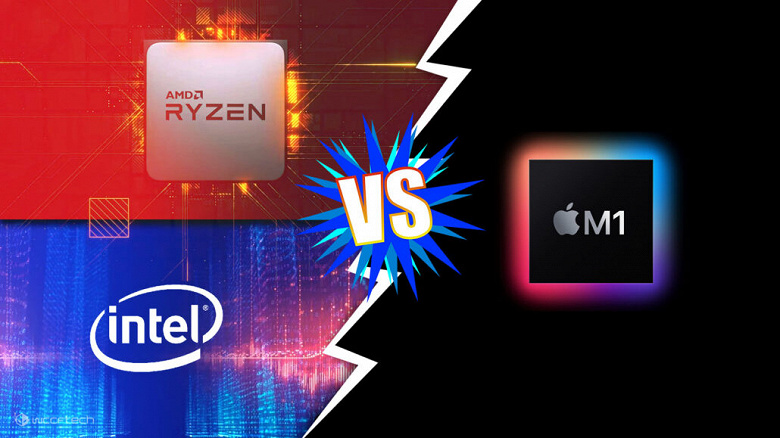
What is happening now is knocking out a chair from under Intel, nothing else. AMD can also catch on, although they are showing good progress. If Intel continues its current policy, continues to consider itself a monopoly and dictate prices for its processors, then it is likely to decline. Why? I analyzed the first tests of the Apple M1 and they made the first big hit.
I'll tell you right away ... I'm not an Apple fan, although I use an Apple MacBook Pro 13 back in 2015, and recently I chose a laptop for my wife and settled on an Apple MacBook Pro 16, although I went through many other expensive laptops. I am not happy with the company's policies, with numerous bugs in MacOS, and if there was an alternative for me, I would gladly sit on Xubuntu. Therefore, I am not an ardent fan, so do not try to convict me of bias.
The new MacBook Air, MacBook Pro 13 and Mac mini are on sale today. There are first performance tests.
According to the Geekbench 5 test in the test on 1 core, the Apple M1 3.2 GHz makes the MacBook Pro 16 on the top Intel Core i9-9880H 2.6 Ghz and even the 2020 iMac on the top Intel Core i9-10910 3.6 GHz. The results of synthetic tests are 1689 vs 1251 vs 1095.
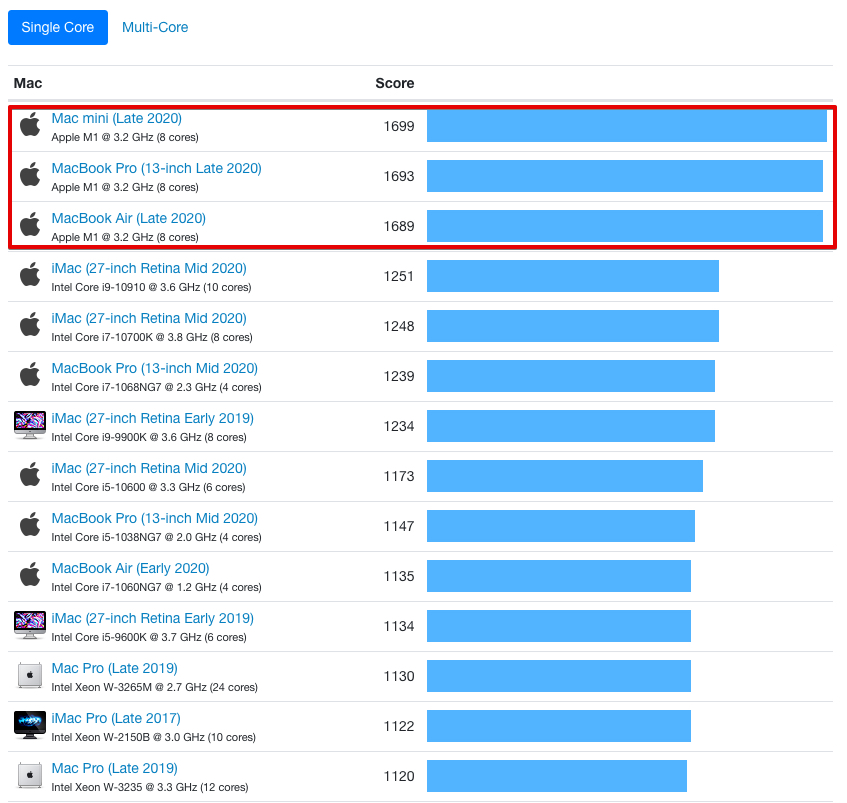
In the multi-core test, the results are 7288 vs 9021 vs 6869. At the same time, the iMac has 10 cores, while the rest have 8 cores.
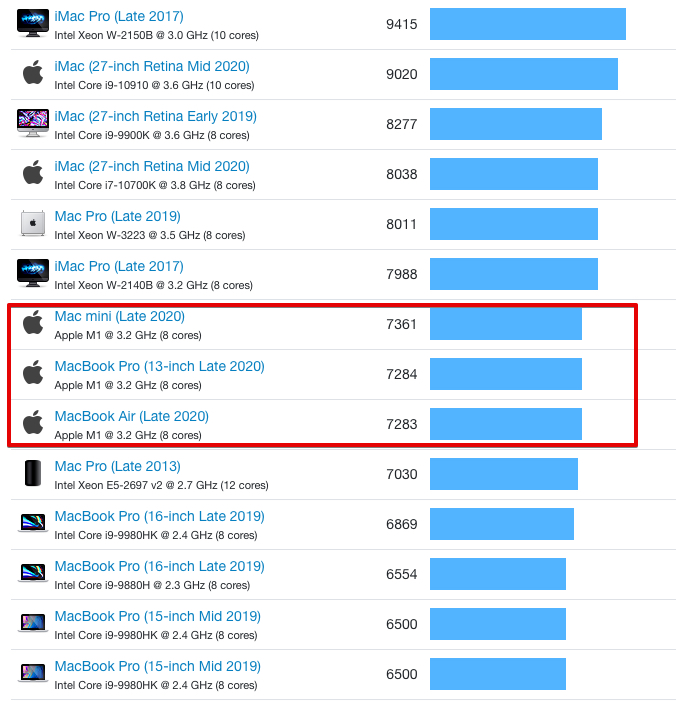
But! These tests do not emulate x86, and the M1 has an ARM architecture, so the same Premier Pro for x86 systems will work slower. Earlier on Geekbench there were measurements in emulation mode and there the results for single core / multi-core were much more modest: 1313 and 5888. But then the data from these tests were deleted from Geekbench and the native tests were left. But the Internet remembers everything . Even with emulation, it's faster than Core i7 and Core i9. What happens when Premier Pro and others support native ARM?

These tests are synthetics worth remembering. The MacBook Air does not have a fan, but the MacBook Pro does, so I assumed the possibility of overheating under prolonged use and there will be a decrease in performance. But I have already seen the export of H264 4K @ 60fps videos as long as 20 minutes, which did not lead to performance degradation. No performance drops ! In this video, by the way, you can see that the export took 24 minutes, and the top MBP of 14 lost 4%. The difference is not that great, but this is Air vs Pro, without fan and base level, further Apple promises more powerful chips.
Even under full load, the M1 warmed up to 33 degrees Celsius on the case on the Air without a fan! Which shocked me, because the MacBook Pro 16 heats up to 46-50 degrees, buzzing like a vacuum cleaner.
Working in Davinci, Final Cut and Premiere Pro with 4K video works both natively (Final Cut) and Premiere Pro in x86 emulation mode (Rosetta 2). At x4 4K playback, no brakes were observed.
Cinebench R23 benchmarks showed an advantage over the Core i9-9880, 1498 vs 1183 in the single core test. True, Ryzen leads the multi-core test.

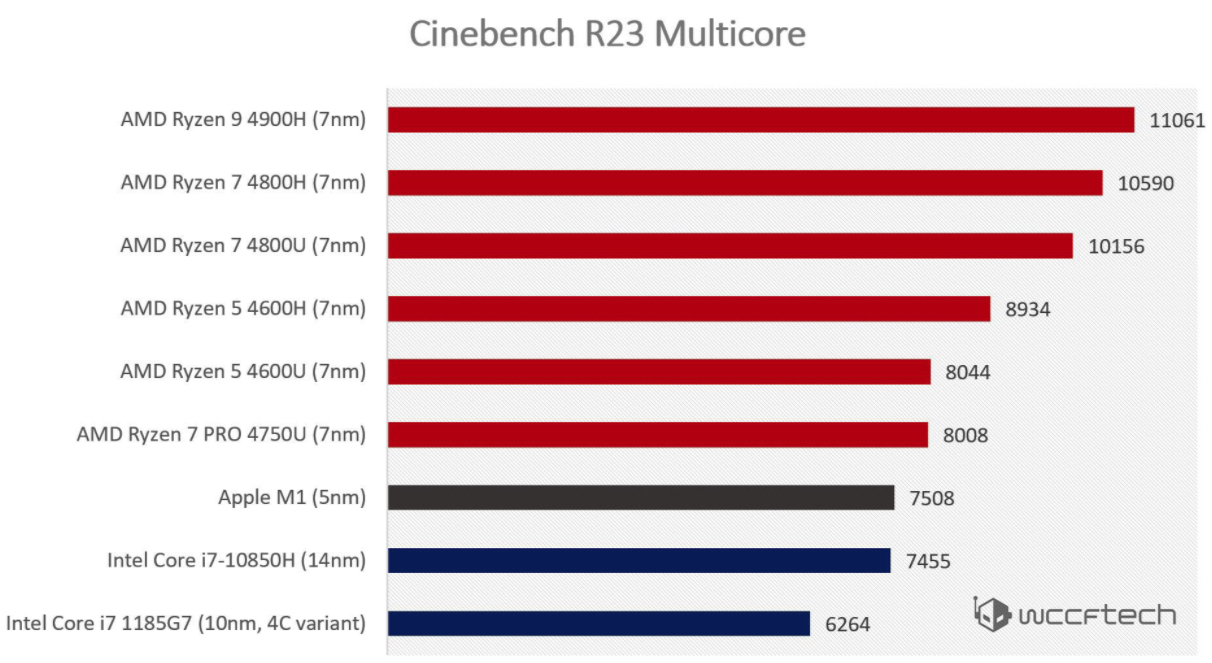
Affinity Test : The M1 powers the iMac with AMD 580X.
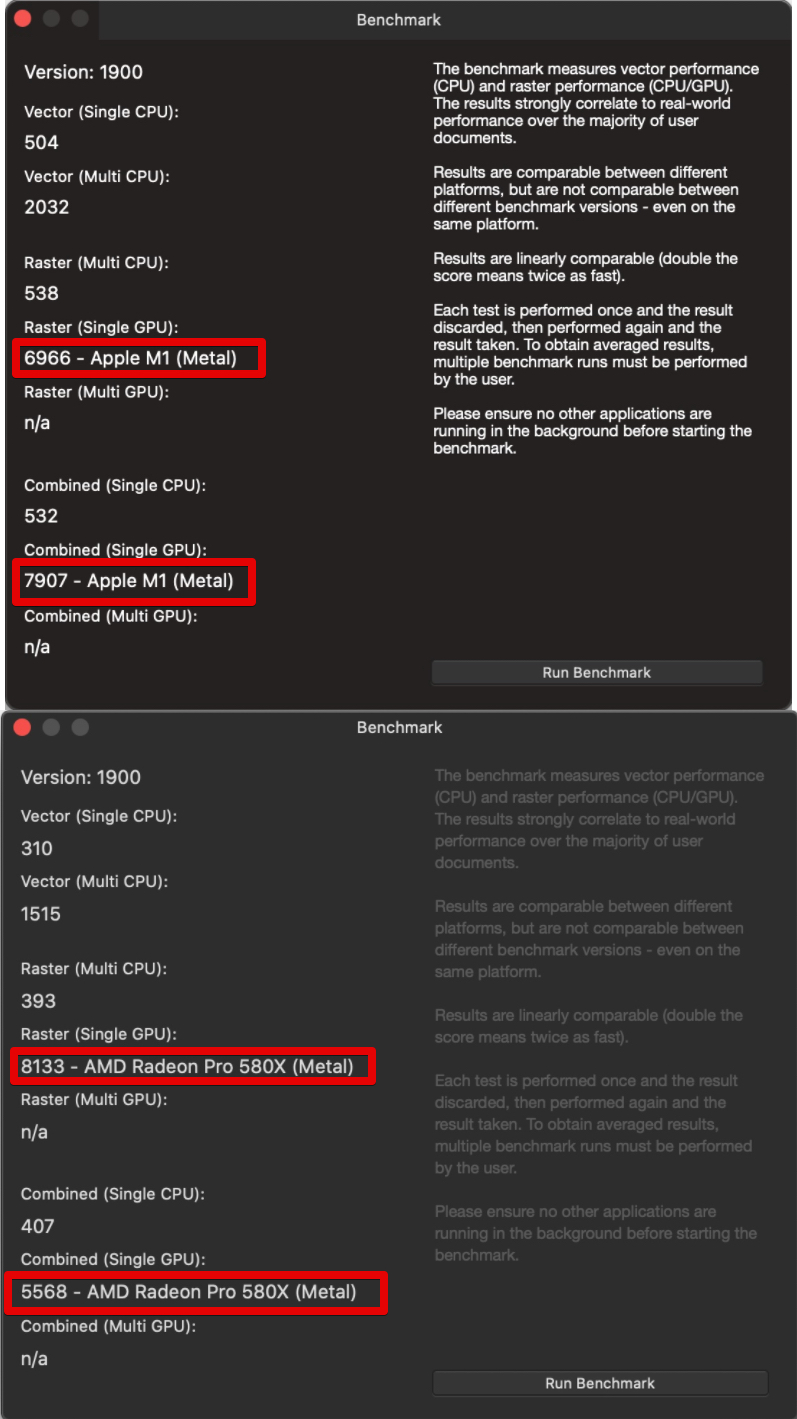
In the morning, the WebKit compilation tests arrived.
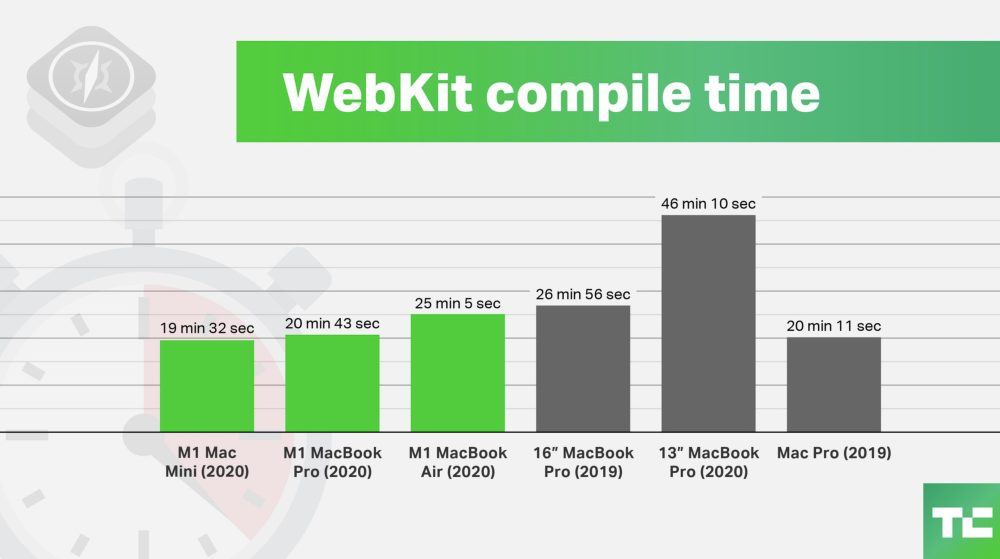
And also on habr useravengerwebposted First Experience: Mac Mini on M1 .
The numbers above speak for themselves. But here's something else ... Apple has raised prices on the official website for the version with Intel processors. For example, a MacBook Pro 16 with a Core i9-9880H, 16Gb RAM, and 512Gb SSD costs $ 2,699 . While the Apple MacBook Air with M1, 16Gb RAM and 512Gb SSD costs $ 1499 . With almost the same performance ... Basic Air entry level versus top Pro ... Pressure for price and quality. Well, this is a powerful blow.
UPD. In the comments, we are already hooked on AMD and Market Share, so let's add that too.
Intel's share of the processor market is falling and AMD's success has contributed to this.

AMD generally has an excellent architecture and the cost of 1Ghz calculations is much lower. This allowed AMD to achieve a 5x increase in its share in the DC segment. And the performance margin for top-end hardware is simply excellent.


What is the share of the Client / Server segment of Intel? The Client segment is 50% larger than the server segment, it was in the Client segment that AMD began to be and now Apple.
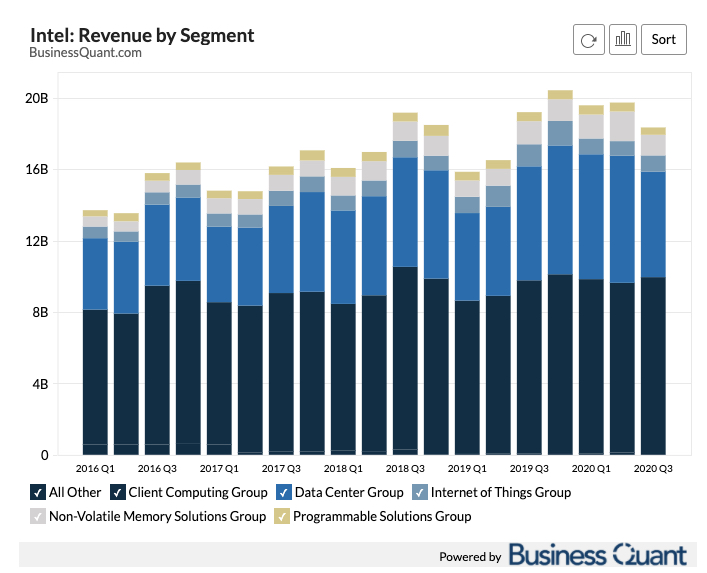
Therefore, I see that Intel is losing ground in the x86 desktop, mobile and server segments of AMD, and then Apple with ARM is starting to excite the market.
And now back to ARM. What can follow next? The wave of hype will inspire other OS vendors and developers to rethink their approach. ARM allows you to run hundreds of thousands of applications from the mobile AppStore, and users will be able to run the same Instagram on Mac. Google also has its own large ecosystem on ARM and this may spur Google to actively develop its OS, or even look towards the production of its devices. If the stars converge, then MS will join the race. The buyer will benefit from this in any case. What do you think? Write in the comments!
And what about the disadvantages or risks?
- 1 6K MBA MBP, . , , Pro , ? , Mac Mini M1 HDMI , .
- Epic Games Launcher MBA , Rosetta , .
IT . , -, . ! () , .The cover image was taken from ixbt.com, well, very relevant.